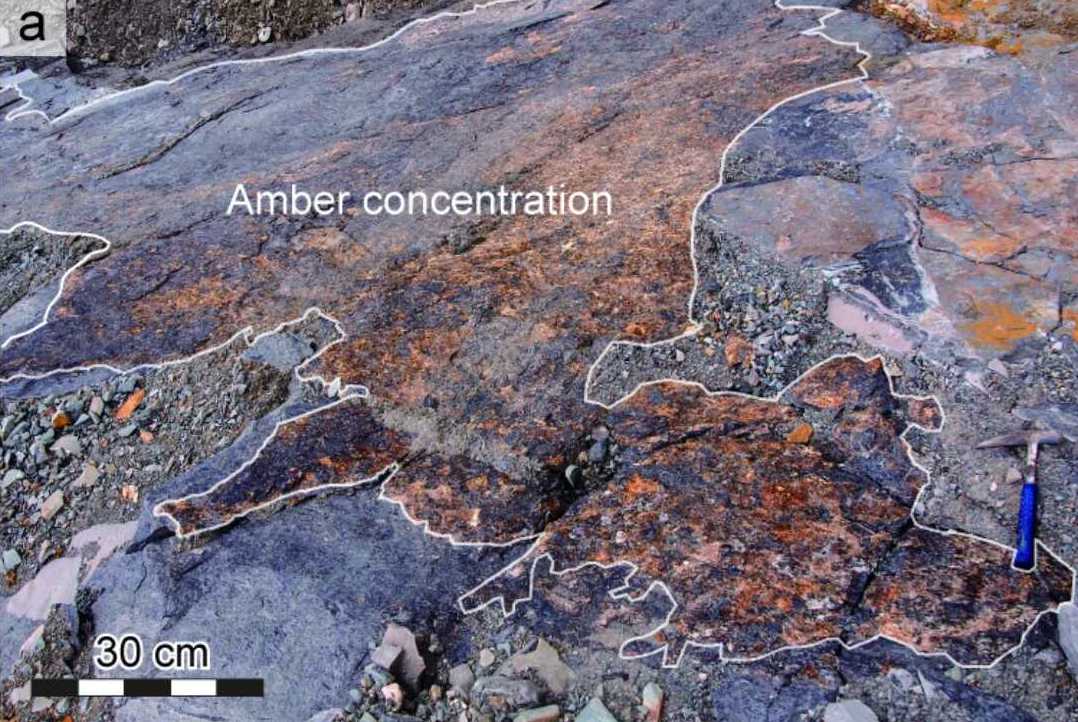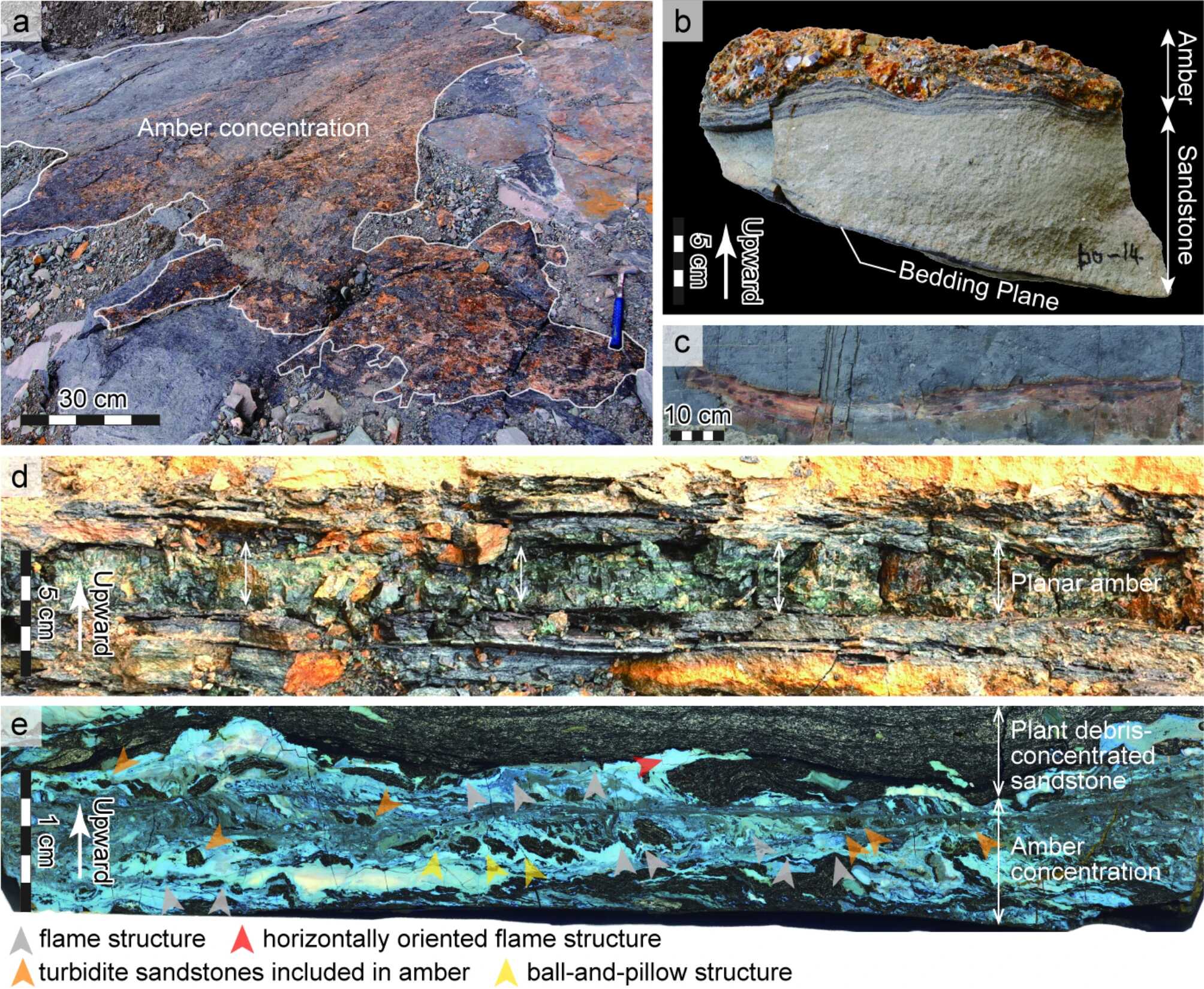
Researchers in Japan have shed light on a long-standing puzzle involving unusual layers of amber buried deep beneath the seafloor in Hokkaido. The discovery centers on the Shimonakagawa Quarry in northern Japan, where layers of ancient marine rock contain large quantities of amber—something rarely found in underwater settings.
The rock layers date back about 115 million years to the Cretaceous period. What makes this discovery remarkable is that amber, a substance that forms from tree resin, typically develops on land, not in oceanic environments. Yet in this quarry, it is embedded within rock that formed far offshore.
According to Aya Kubota from the Geological Survey of Japan, the presence of amber in this marine location likely traces back to a massive tsunami. Her team suggests that powerful waves from an ancient underwater disaster dragged tree resin from land deep into the sea, where it became trapped in sediment and eventually turned to amber. The study was published in Scientific Reports.
Signs Point to a Massive Ancient Wave
Some of the amber pieces uncovered show patterns that form when resin is still soft—indicating the material had not yet hardened when it was buried. These signs were detected using fluorescence technology, which highlighted stress marks within the amber, similar to those found in soft plastic before it hardens.
This led researchers to conclude that the resin must have been swept away by force shortly after being released by trees.

Based on the geological evidence, they believe a major tsunami—possibly triggered by a large undersea landslide—carried the resin out to sea. Once submerged, the resin settled onto the ocean floor and was eventually covered by layers of sediment, preserving it for millions of years.
Beverly Goodman, a professor at the University of Haifa who specializes in ancient tsunami events, praised the research. Although she was not involved in the study, she said the findings offer one of the clearest examples to date of tsunami deposits from prehistoric times. She also noted that while evidence of ancient tsunamis is rare, new scientific techniques are making such discoveries more frequent.
Unlocking Clues from Earth’s Distant Past
Japan’s location on the edge of four tectonic plates makes it one of the world’s most earthquake- and tsunami-prone regions. Hokkaido, in particular, experiences frequent seismic activity. The team believes that a landslide on the seafloor during the Jurassic-Cretaceous period, hundreds of kilometers away, may have created the tsunami that buried the resin.
Tsunamis are usually caused by sudden shifts in the ocean floor, which displace massive amounts of water and create powerful waves. These waves often strike with little warning, damaging coastlines before pulling debris back into the ocean. In rare cases, materials from land are dragged into deep water and preserved in rock layers.
Kubota’s team highlights that while modern tsunami deposits are better understood, identifying those from millions of years ago remains difficult. Much of the evidence is either lost or misidentified as remnants of powerful storms. However, this discovery in Hokkaido could help rewrite that part of Earth’s history.
Goodman emphasized the importance of recognizing these ancient events. She explained that there’s a growing understanding among scientists that tsunamis were likely far more common in the distant past than once believed. Thanks to better tools and more awareness, researchers are now starting to uncover more of these long-hidden traces.





